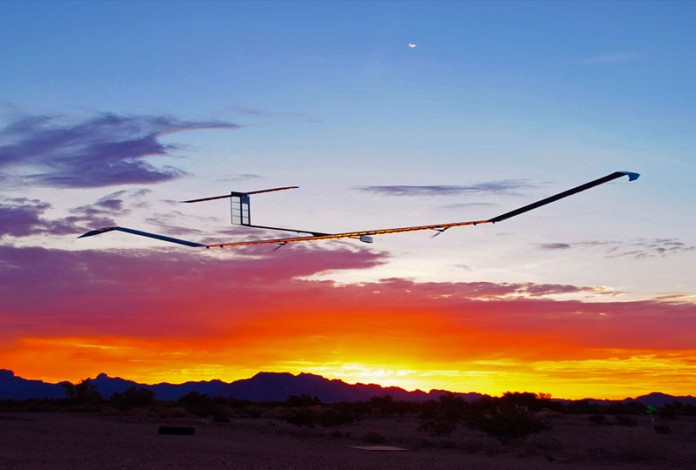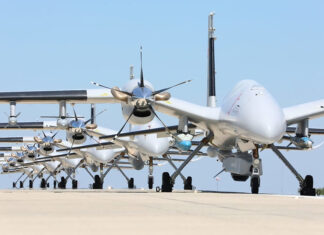
Airbus Defence and Space has launched a High Altitude Pseudo Satellite (HAPS) program developing a commercial variant of the world record setting Zephyr 7 high altitude long endurance (HALE) solar-powered unmanned aerial vehicle. Zephyr 8 will develop the next generation platform, designed to operate at very high altitude, as a pseudo-satellite.
Airbus’ subsidiary Astrium has been working on HAPS since 2008 in cooperation with the group’s defence subsidiary Cassidian and Innovation Works. For several years the program was managed as a cross-divisional nursery project, integrated a team of space and aviation specialists. In 2013 Astrium, now part of Airbus Defence and Space acquired the Zephyr assets from QinetiQ, integrating the Zephyr staff into Airbus’ HAPS organization.
Astrium is now set to develop a High Altitude Pseudo-Satellite offering that will provide a valuable augmentation to its existing space based services for communications and remote sensing
Running exclusively on solar power and flying at high altitudes above the weather and above commercial air traffic, Zephyr 8 will bridge the gap between satellites and UAVs. Unlike reconnaissance satellites that monitor the earth surface from low-earth orbit, these HAPS will be able to persist over an area of interest providing satellite-like communications and intelligence, surveillance and reconnaissance (ISR) services without interruption. Through these evaluations Airbus’ Zephyr team is ready to help customers design, build and operate the mission payloads, or provide the necessary interface to integrate those payloads in upcoming test flights.
In 2010 the Zephyr 7 successfully achieved several world records, including the longest flight duration without refuelling (14 days), that was ten times longer than any other aircraft achieved before. It also flew at very high altitude, as high as 70,740 ft. The Zephyr 7 went through final testing in 2013, clearing the way for the next generation Zephyr 8.
According to Jens Federhen, Airbus HAPS program manager the team is now focused on the follow-on Zephyr 8, that will be able to carry and test various mission payloads. “We are ready and looking forward to demonstrating its unique capabilities to customers, in flight” Federhen said.
“Zephyr 7 was years ahead of any other HAPS system.” Zephyr Technical Director Chris Kelleher said, “We spent the last year analysing and designing exactly what we need to improve it”. Kelleher said Airbus has received permissions to fly Zephyr in test ranges in Australia, the USA and Europe.




















